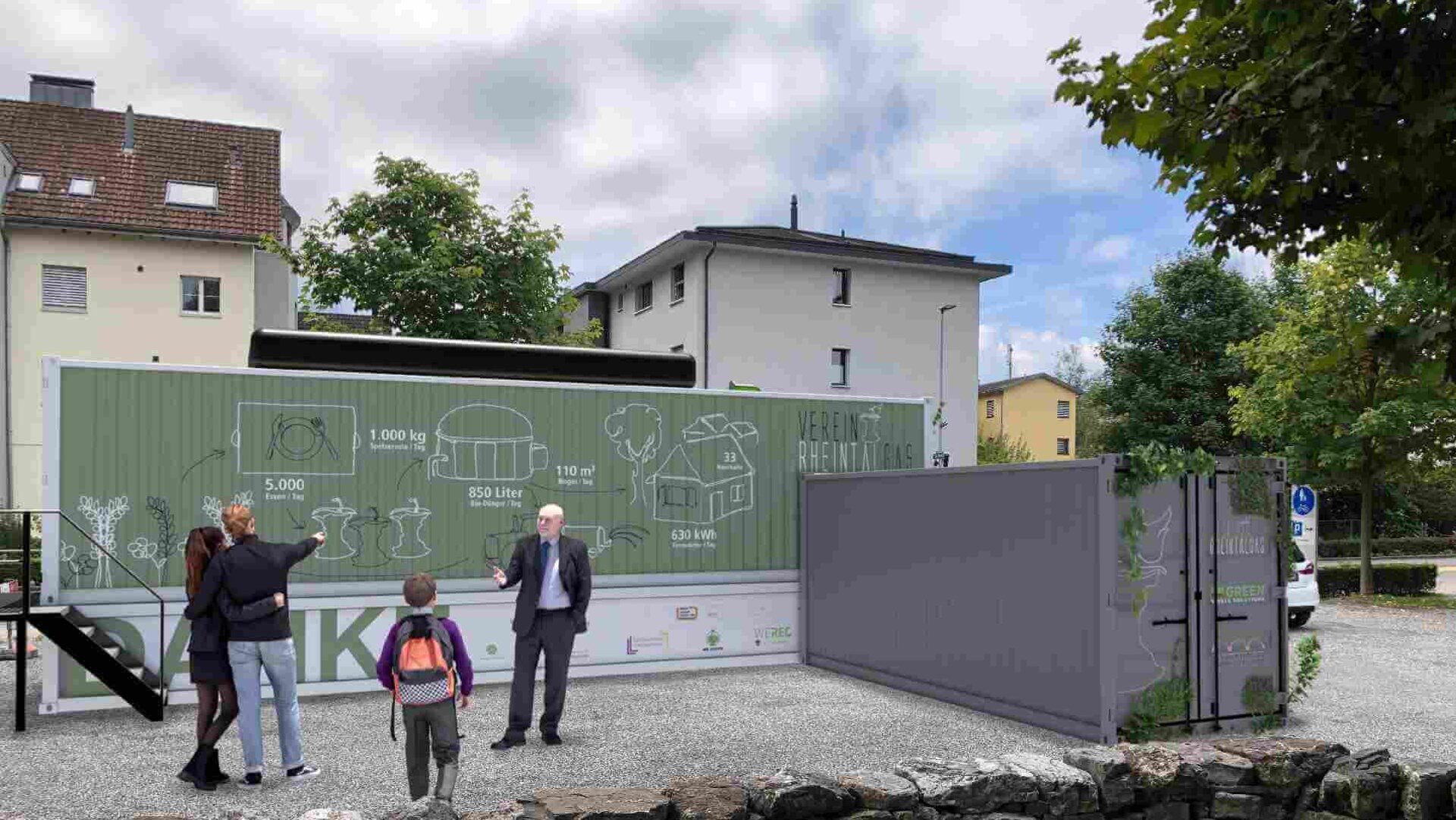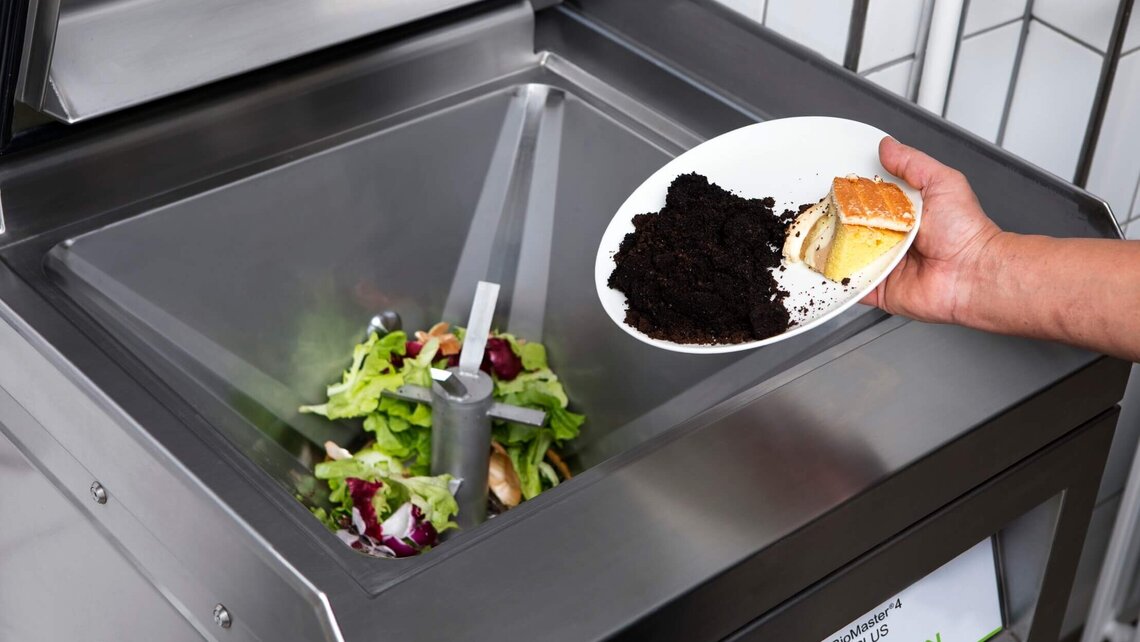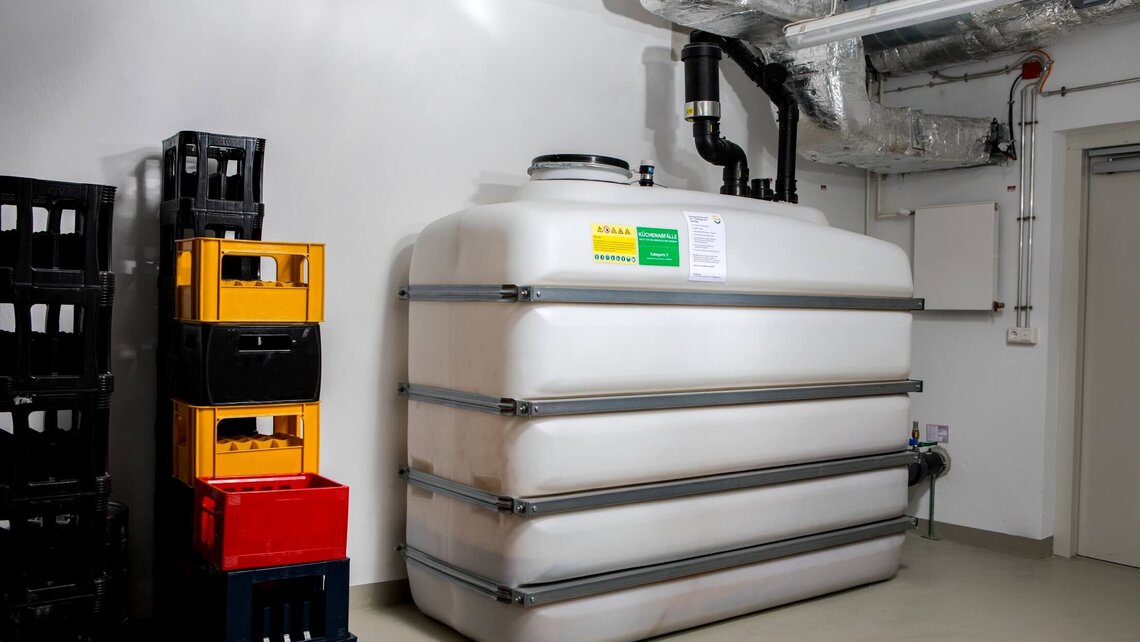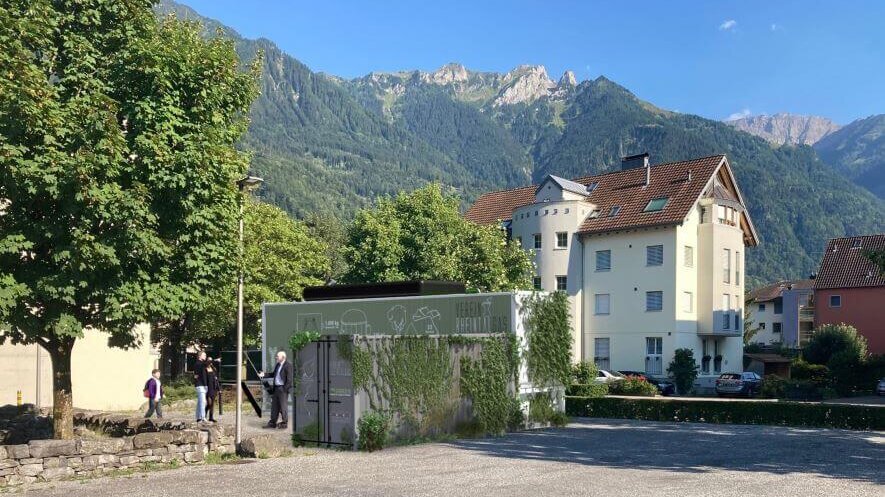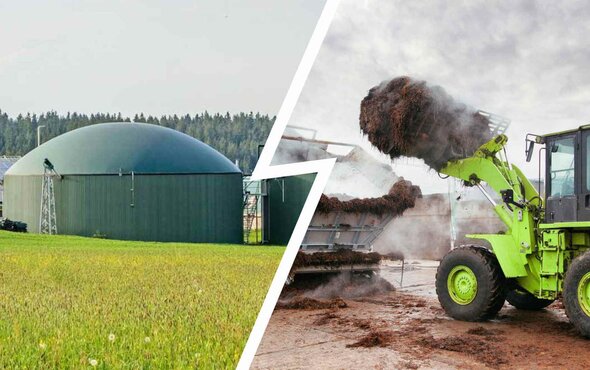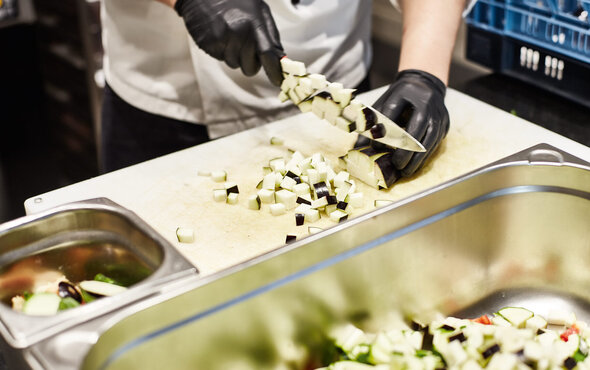Becoming more energy independent. How can food waste from kitchens and dining rooms be used for heat and electricity? How can food service businesses handle resources more sustainably and save money? MEIKO GREEN Waste Solutions is working with Rheintalgas to find out. The result? TBC.
MEIKO GREEN Waste Solution and Rheintalgas e.V. are energy pioneers. They are developing a profitable small-scale biogas plant for food-service businesses. These plants will exclusively process food waste, turning it into clean energy and natural fertiliser. Their aim: to noticeably reduce environmental impact, cut energy costs and save money. So how will these visionaries achieve their goal? By using valuable kitchen waste and leftovers in the following three categories:
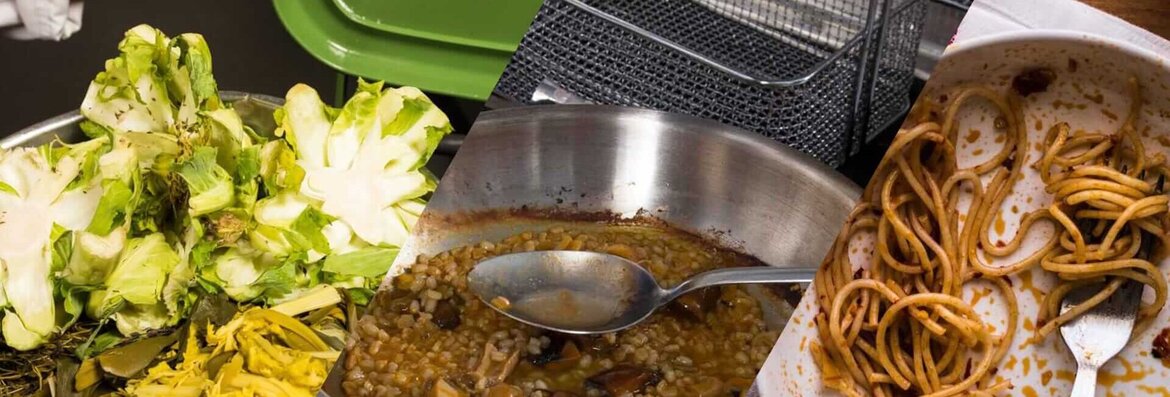
In future, the kitchen waste and food leftovers in this area will be collected in a tank storage system and transformed into district heating and natural fertiliser inside a small-scale biogas plant. This kind of container biogas plant can process up to 1,000 kg of liquid waste per day. That sounds like a lot. It is. But the first priority it always to avoid waste at the food preparation stage. Plus, let's not forget that this quantity is not coming from just one business, but several.
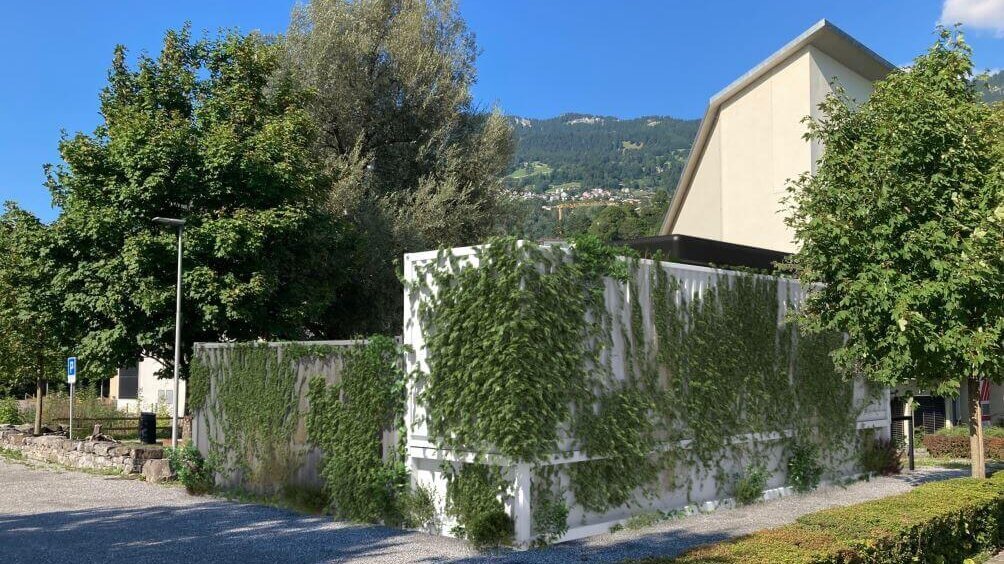
Plus, the obvious position will help local residents and businesses to become more aware of the issues around food waste from both kitchens and dining. How do I avoid food waste? How do I best separate and recycle it? I can see the whole process just outside my front door!
‘There is so much potential in biogas plants. And food waste from food service businesses is the ideal feed material, producing bioenergy and high-quality fertiliser.’
Dr. Michael Meirer, Head of Consulting at MEIKO GREEN Waste Solutions

80–90% of the original quantity of organic waste remains as digestate and is pumped into a tank measuring 14 m³. Local farmers collect this high-quality, natural fertiliser 2–3 times a month and spread it on their fields. In seasons when no fertiliser is needed, they still collect it and store it in tanks on the farm.
The plant is monitored digitally and the operator is immediately informed of any malfunction by push notification on their smartphone.
BENEFITS
of a small-scale biogas plant that runs on food waste
- With the principle of staying local, all feedstuffs stay close by and are converted into heat and natural fertiliser without the need to travel. This system can partially replace the need to import fossil fuels and synthetic fertilisers. That helps communities to become more independent.
- This collection and storage process is practically contaminant free and guarantees high-quality food waste from kitchens and plates, as well as optimum conversion into energy.
- Processing using a closed system is odourless and efficient
- A versatile system: all the technical expertise and high concentration of engineering art that you will find in a large biogas plant but in the space of a shipping container. The whole plant can easily be transported by lorry and quickly be ready for action in another location.
HEATING THAT USES BIOMETHANE INSTEAD OF NATURAL GAS
To stay within the target 1.5 °C planetary warming, we will need to use all available sources of renewable energy. The German Biogas Association (Fachverband Biogas e.V.) has released a background paper, ‘Sustainable technical volume potential for methane from biogas plants’, making clear that biogas can contribute to our energy transition. If all of the digestible waste in Germany was converted into biogas, it could replace 42% of the natural gas the country imports from Russia. More renewable energy in the energy mix means lower CO2 emissions. In 2020, Germany saved around 20 million tonnes of CO2 by using biogas.
